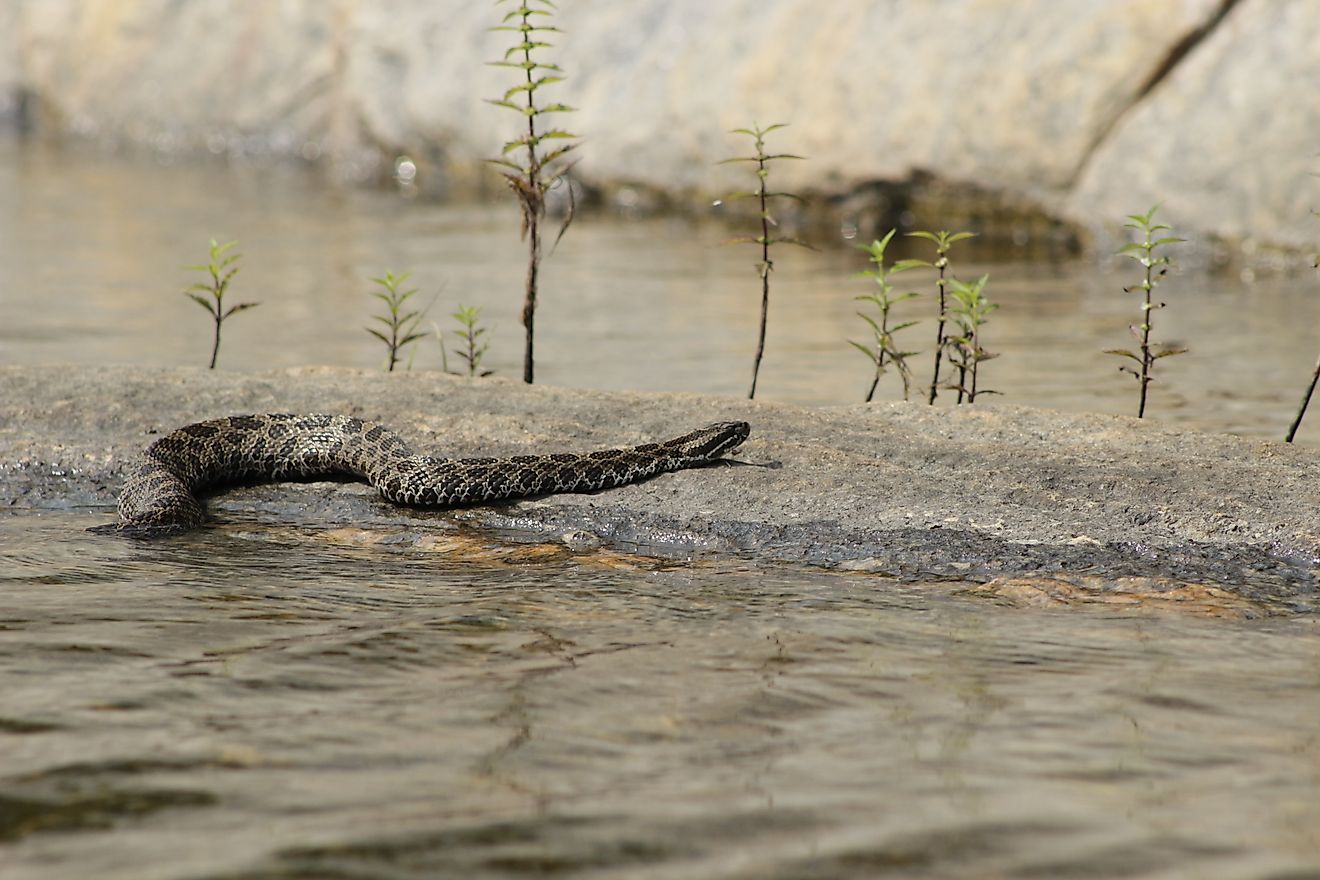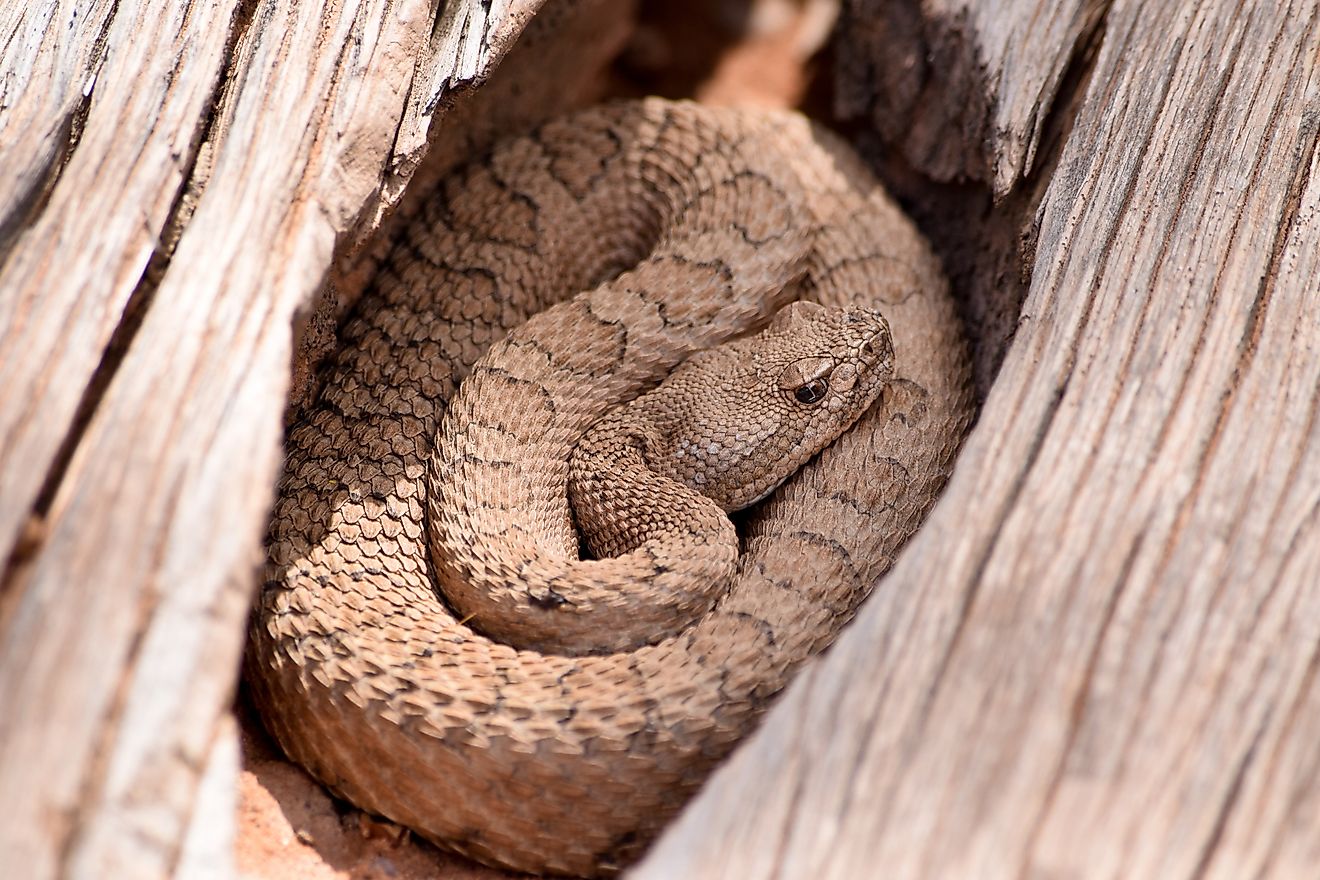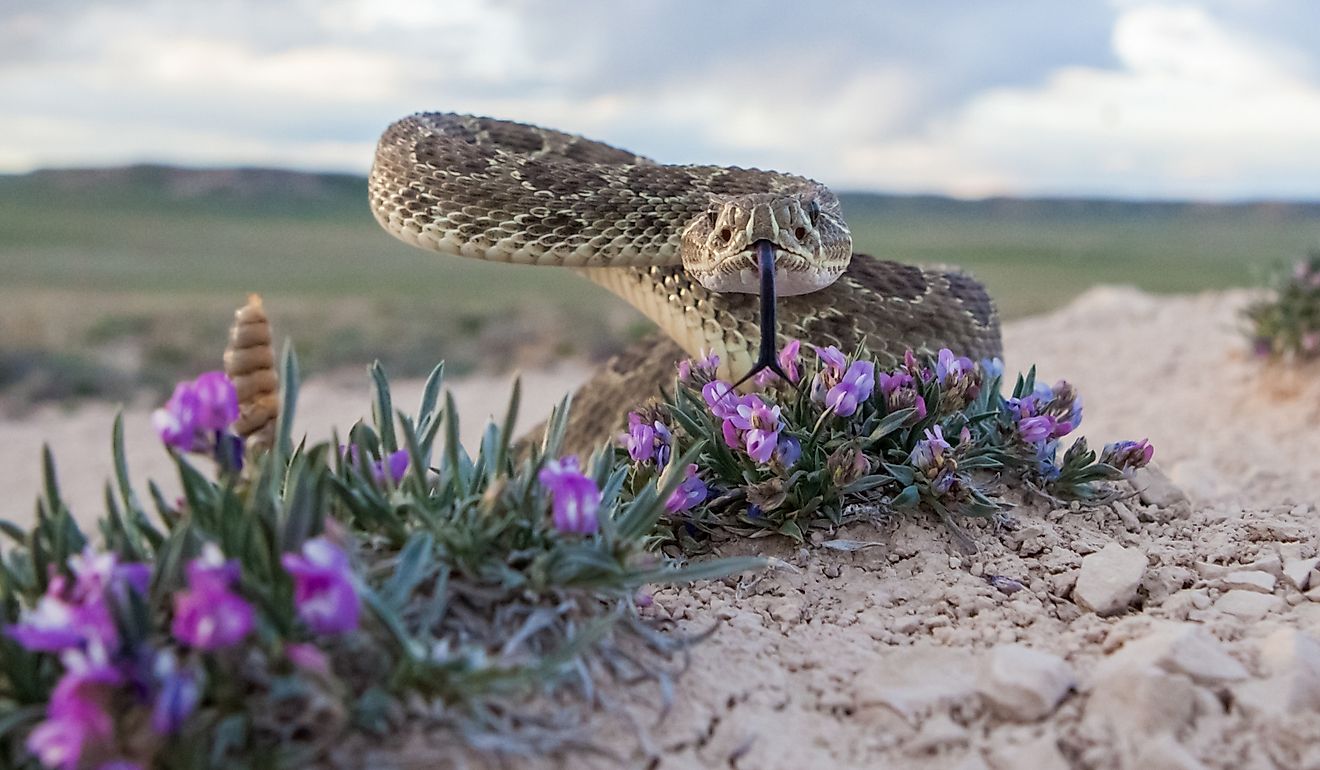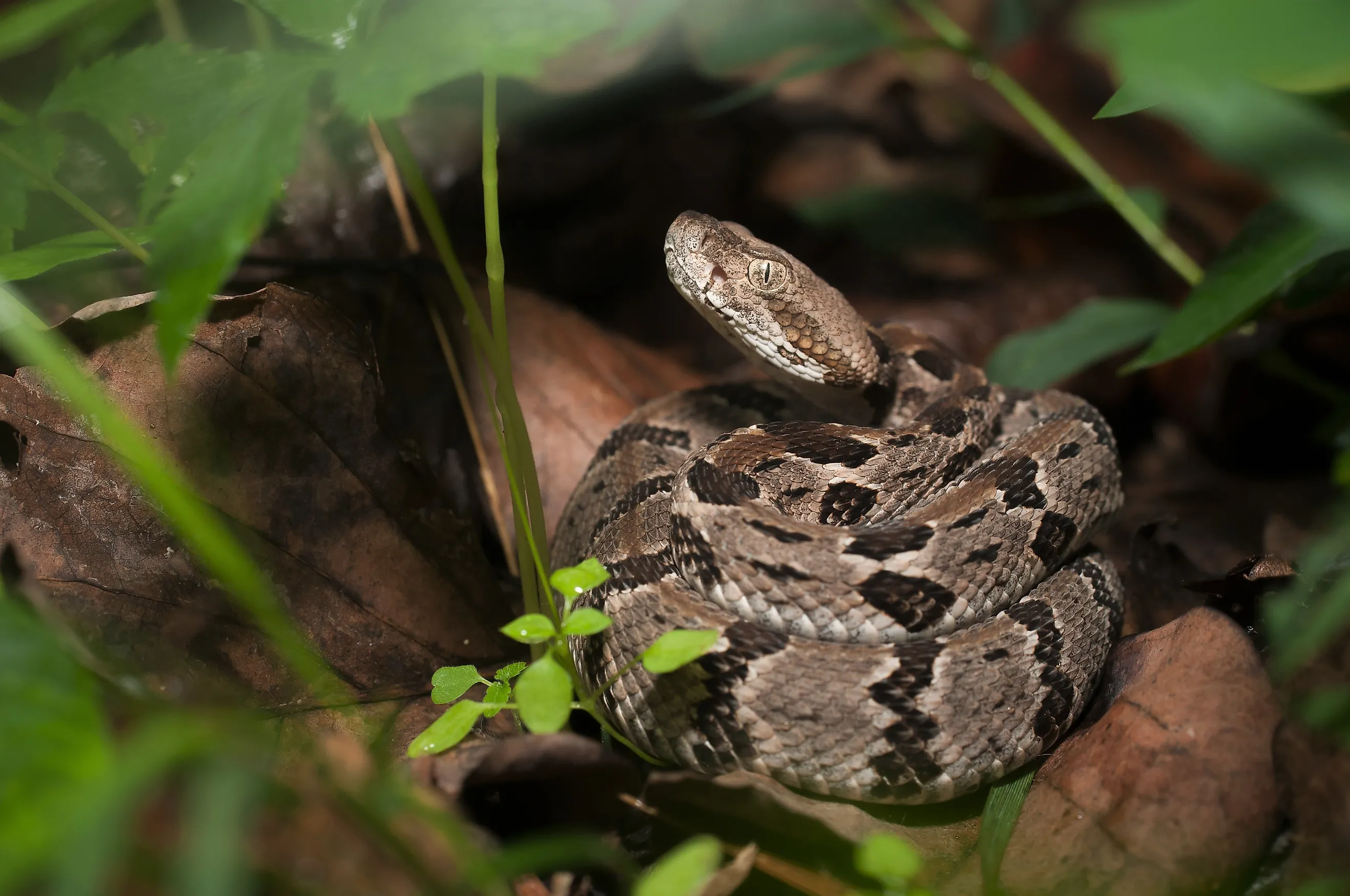
Snakes To Avoid In Minnesota
The state of Minnesota is nearly synonymous with the term fresh water, as it is often associated with almost 12,000 lakes found within its borders. This may attract tourists with a passion for swimming and water sports activities. However, this has also contributed to a budding ecosystem in which snakes are thriving members.
Luckily, visitors to the state who prefer to avoid these slithering reptiles have no need to panic. With only 17 snake species found in the state of Minnesota, it’s ranked lower on the snake population scale than most states, including those bordering it. For example, Iowa, which sits to the south, has nearly twice this amount, with 28 native species, while Wisconsin to the east is home to 21. Only two of the 17 found within the state are venomous, and based on their conservation status, it is unlikely visitors will encounter either one.
Eastern Massasauga
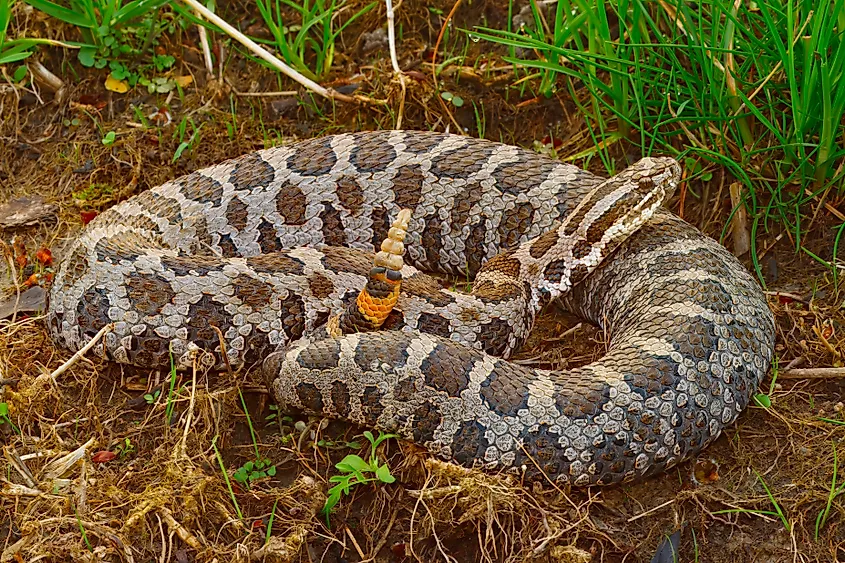
One of the two venomous snakes found in Minnesota, the Eastern Massasauga (Sistrurus catenatus), is considered small in size, typically growing to a length of about 18.5 to 30 inches. It is grayish-brown in colour, with dark brown spots, and has an additional 2-3 rows of smaller spots along its body. A ringed rattle can be found at the end of its tail, which it uses to warn potential predators of its presence when feeling nervous or threatened.
Although this species is shy, it is crucial to note that it will strike if cornered. They are typically found in wetlands, such as bogs and marshes, where they prefer to hibernate during the colder months. During the warmer months, they migrate to meadows and upper fields for breeding and feeding.
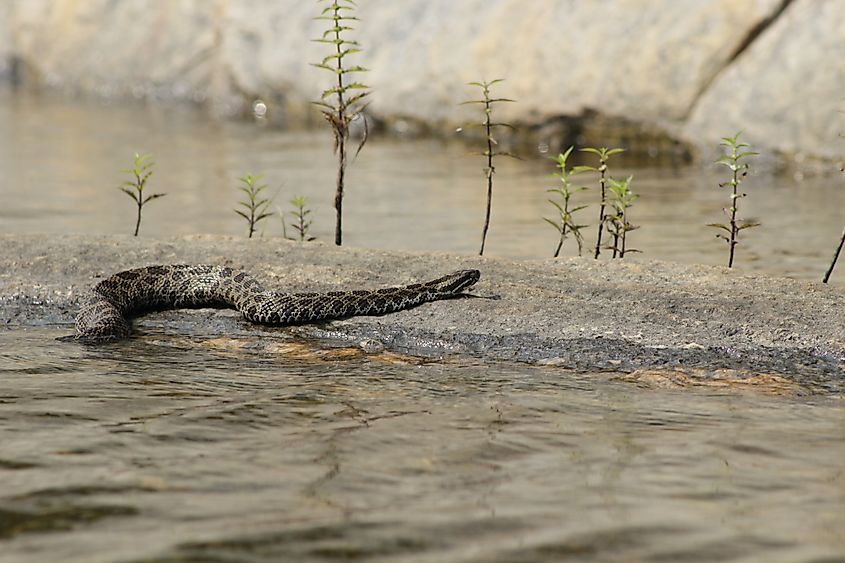
The Eastern Massasauga possesses fangs that fill with venom when striking prey, fatal to smaller animals like rats and mice. It belongs to the pit viper subfamily, aptly named due to their heat-sensing Loreal pits, which are organs found under and behind the nostrils. These organs primarily aid snakes in searching for warm-blooded prey. They also help maintain accurate strikes on prey, even during the darkness of night or when slithering through burrows.
That said, there is little cause for concern about running into an Eastern Massasauga in Minnesota, as there have not been confirmed documented sightings of these snakes since 1936. In fact, a two-year survey conducted by the Minnesota Department of Natural Resources, from 2002 to 2003, reported that no evidence of the species was found in the survey area. There is also currently no documented breeding population in the state, though in bordering states just on the other side of the Mississippi River, such as Wisconsin, there are known mating areas.
It will not surprise readers to learn, based on this, that the species was listed as endangered in 1996 after several failed attempts to find any evidence of the species' existence in the state. It was additionally listed on the Federally Threatened list by the U.S. Fish & Wildlife Service in 2016. Due to the lack of sightings, the Minnesota Department of Natural Resources has also noted that the species is “possibly extirpated” under its status. Reasons for the decline vary, though loss of habitat, intentional killing, and wildlife trafficking are thought to have played a significant role.
Timber Rattlesnake

Found in southeastern Minnesota, the Timber Rattlesnake (Crotalus horridus) is the second venomous snake found within the state. They prefer rocky areas for hibernation, seeking dense foliage for coverage when they emerge in the warmer months. Although the Timber does carry venom within its fangs that is toxic to humans, there has not been a fatality reported from a Timber Rattlesnake bite since 1868. Similar to the Massasauga, the Timber is timid and will not strike or even rattle unless they feel cornered or threatened. In fact, the majority of snake bites reported from this snake occur when individuals attempt to pick up or trap them, an ill-advised decision.

Just as with the Eastern Massasauga, the Timber Rattlesnake is part of the pit viper subfamily, with heat-sensing pits on either side of their face. Though both of Minnesota's venomous snake species are classified as pit vipers, the Timber Rattlesnake is actually more closely related to the Western Diamondback than the Eastern Massasauga, as they are part of the same genus group known as Crotalus.
Though sometimes mistaken for each other, the Timber Rattlesnake is much larger in length and weight than the Eastern Massasauga, with the average length being 36 to 30 inches. This is nearly twice the average length of the Eastern Massasauga, an easy identifier for those who stumble upon it. The coloring of its scales can also help to differentiate the Timber Rattlesnake, appearing grey, yellow, or even dark brown. Dark bands (also referred to as barred markings) run down the back of the snake, which can also be black, dark brown, or light brown in color. A constant trait, no matter the color of the scales or markings, is the tail, which always remains solid black.

Unfortunately, it was noticed in 1984 that the population of the Timber was no longer thriving as it once had, and the species was added to the Special Concern list in Minnesota. In 1996, after a further decline in numbers, the Timber Rattlesnake was moved to the Threatened Species list. Despite the species being rarely seen and often elusive, there have been recent sightings. Recently, in August 2025, surveyors from the Minnesota Herpetological Association discovered an active den of Timber Rattlesnakes and shared a video of it on their association's Facebook page.
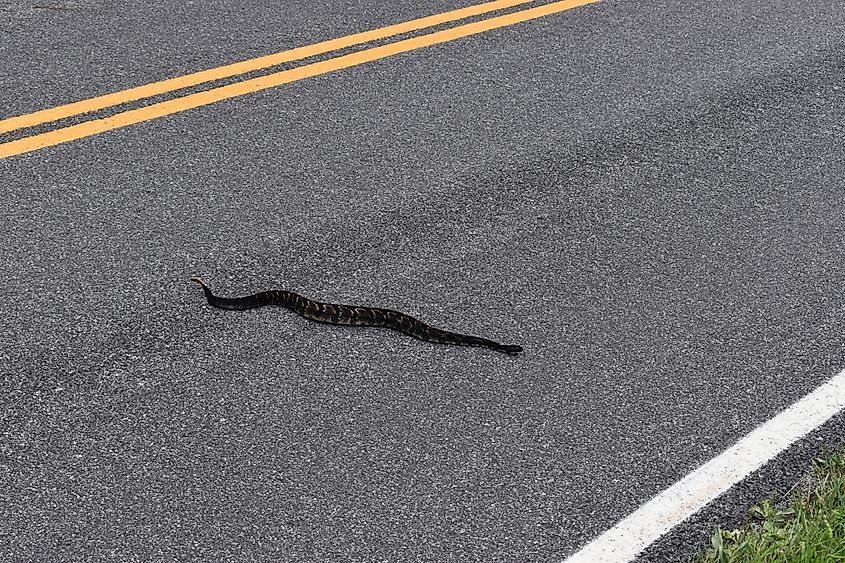
Although many factors contributed to this, including habitat loss and road accidents, the primary reason is believed to be the bounty placed on the snake by the state in 1909. Sadly, this bounty led locals to overhunt these creatures in the hopes of earning extra cash, resulting in a decline in their population. The bounty program was revoked in 1989, but by then, the damage to the population had already been done.
In Summary
With both of Minnesota’s venomous snake species having low populations, it's unlikely that even locals will see either one, especially if they remain within city borders the majority of the time. If venturing into quieter and less frequented areas, though, it is important to keep a close eye on where you are stepping. If an individual does happen upon a snake, the key is to remain calm and give it a wide berth. Snakes have no ill intent; they are an important part of nature and are likely just trying to go about their day, just as you are.





